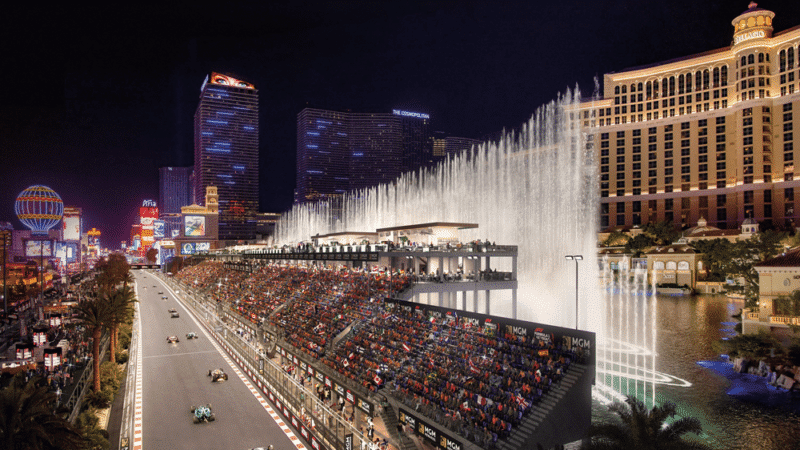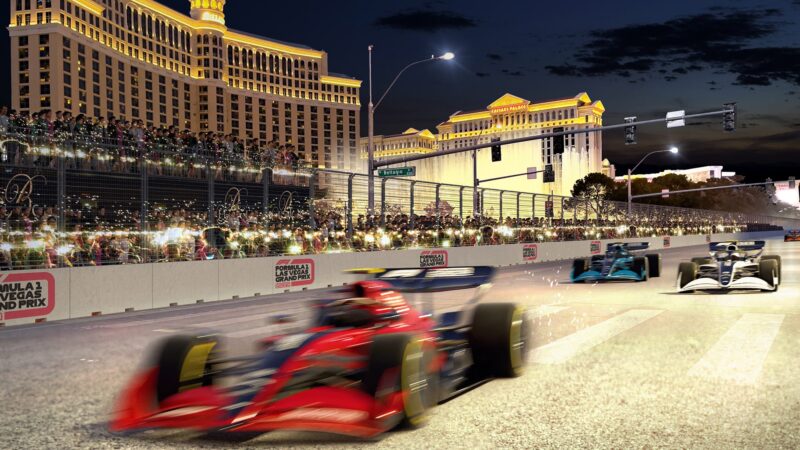Located in the heart of Clark County, the 3.85-mile circuit is composed of 17 corners and two DRS zones, which wind their way around the dazzling screen of the new Sphere, down the Strip at over 200mph and round to F1’s new paddock building at the start/finish straight.
It offers one of the best hopes for rivals to challenge Red Bull and Max Verstappen, thanks to the unknown layout and track surface, as well as the forecast cold weather. On-track temperatures could drop to 10C for qualifying and the race, making it difficult for drivers to get heat into their tyres for qualifying runs or during the frantic start to the Grand Prix.
In its brief history, the Las Vegas Grand Prix has produced its fair share of entertainment, but this week’s race couldn’t be much further from the twisty Caesars circuit that was baked in sweltering temperatures.
In 1981, Alan Jones topped the podium for Williams but the championship battle behind him was perhaps the main attraction. After setting the grid on fire in qualifying — grabbing pole by two tenths of a second — title-challenger Carlos Reutemann mysteriously fell out of contention in the race, ultimately finishing a disappointing eighth. This left Brabham’s Nelson Piquet with a much easier task, coasting his way to a distant fifth, picking up two points and winning his first F1 title by a single point.

The Las Vegas Grand Prix will be the first Saturday race Formula 1 has seen since South Africa in 1985 – with a 10pm start (local time)
Getty Images
The following season told a similar story, with Michele Alboreto taking his maiden F1 victory for Tyrrell while Keke Rosberg clinched the title behind him — besting John Watson in the drivers’ standings with another fifth place finish.
With an F1 contract in place for three years and rumours of a ten-year extension already on the cards, the next generation of Las Vegas Grands Prix have plenty of chances to make a little F1 history of their own.

